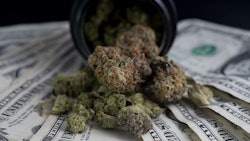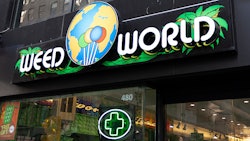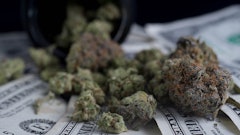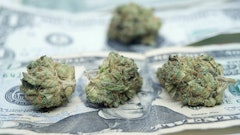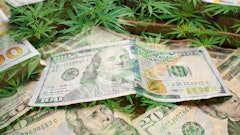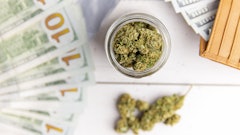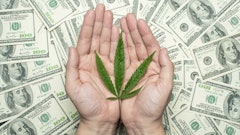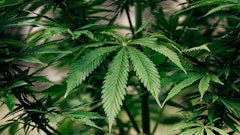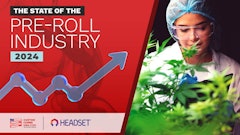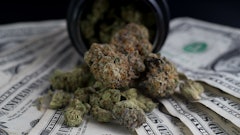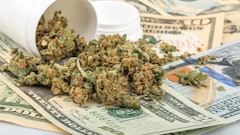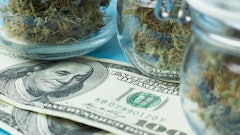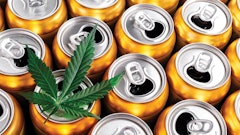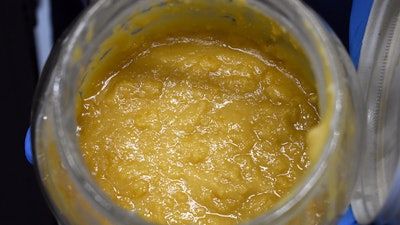
Products like live rosin, vape pens and infused prerolls are all expected to perform well at cannabis dispensaries on July 10.
While July 10, or 710, which spells “OIL” when turned upside down, is a lesser known holiday for the cannabis industry, Oil Day (or Dab Day) offers consumers and retailers alike the opportunity to capitalize via sales boosts and discounting in the concentrates category.
On Oil Day 2022, total retail sales increased by 6.2% in the U.S. and 6.6% in Canada when compared to the previous four Sundays, according to cannabis data and research company Headset. More specific to the holiday, the concentrates category experienced 66% sales growth in the U.S. and an 8% increase in Canada versus the previous four weeks.
“I think a lot of it comes down to cultural appreciation,” Headset data analyst Mitchell Laferla said. “There’s a lot more cannabis-centric culture, or at least that diehard mentality, in the U.S. than Canada.”
In the U.S., the average discount on concentrates grew 73%, rising from 20% to 34.6%, for July 10, 2022, when compared to the previous four Sundays, while the average discount for products in this category grew from 3.9% to 5.6% in Canada, for a relative increase of 44%.
While discounting prices will play a pivotal role again this Oil Day, Laferla said retailers should utilize technology to ensure they are employing “smart” discounting and picking the right product pairings to maximize their profits and not undercut margins.
Understanding trends in the market also helps.
Rosin remains one of the fastest-growing concentrate segments in both the U.S. (+14.1%) and Canada (+52.4%) when comparing sales for the first half of 2023 to the same period from 2022, Laferla said. Specifically for Oil Day 2021, Rosin products had the strongest growth in U.S. markets, increasing in sales by 213% over the previous four Saturdays, according to Headset.
On Oil Day 2022, vape pens experienced a 10% sales growth in the U.S., when compared to the previous four Sundays.
And concentrate-infused prerolls have taken the Canadian market by storm, growing a blistering 1,426% year-over-year, according to a whitepaper published last month by Custom Cones USA in partnership with Headset. Infused prerolls are two to three times more potent than a standard preroll, and the data indicates customers are willing to pay more for potency.
Although Oil Day is an opportunity for retailers to capitalize on various segments of the market, overall sales traffic associated with the niche holiday does not rival the likes of 4/20, Black Friday, Green Wednesday, or the increased traffic leading up to Christmas and Labor Day.
When Oil Day fell on a Saturday—often the second busiest day of the week for retailers—in 2021, it was the 50th highest sales day of the year in the U.S. and 135th in Canada, Laferla said.
And in 2022, when Oil Day fell on a Sunday, it was the 147th highest sales day in the U.S. and 279th in Canada, he said.
Here, Laferla dives a little deeper into the sales and product trends associated with the holiday, how discounts play a role, and the overall significance of July 10 for the industry.
Editor’s note: This interview was edited for style and clarity.
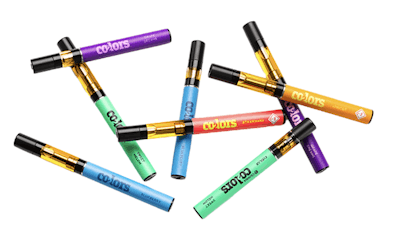
Tony Lange: With July 10 coming on a Monday this year, do you anticipate total sales to decrease compared to 2022’s Oil Day (Sunday) in 2021 (Saturday)?
Mitchell Laferla: Yes, definitely. Monday and Tuesday [retail traffic is traditionally] very low; Wednesday, Thursday you start to see the climb and uptake; Friday is the largest day for cannabis sales, usually, on a typical week; and then Saturday [is the second highest]; and then Sunday starts to drop back down again. So, it’s going to be a decrease from past years. And even just looking through the historicals, moving from Saturday versus Sunday, [Oil Day] went from being the 50th highest sales day of 2021 in the U.S., which was a Saturday, to the 147th highest sales day of the year in 2022, which was a Sunday.
So, the day of the week has a significant effect on the overall performance, but there’s going to be a relative uptick [for Oil Day 2023] in comparison to just a normalized Monday.
TL: Why did the concentrates category experience 66% growth on July 10, 2022, in the U.S. but only 8% growth in Canada—why the difference between the two countries?
ML: This is kind of a universal effect. What we usually see on all the cannabis-focused holidays is that the United States tends to experience it to a higher magnitude than Canada does, whether it’s 4/20 or just any kind of party-centric holiday, like those few days leading up to Thanksgiving or the Fourth of July, where you may see triple-digit growth in the U.S. and then just double-digit in Canada. And I think a lot of it comes down to cultural appreciation. There’s a lot more cannabis-centric culture, or at least that diehard mentality, in the U.S. than Canada.
Also, I think regulation has a component in it in terms of it’s a little more free to purchase as much as you want in the U.S. in comparison to Canada. That shapes a lot of the differences that we see in Canada. For example, in certain provinces in Canada, vape pens are not allowed. So, that affects, ultimately, how many vape pen sales you see countrywide in comparison to the U.S., where it’s a little more loose in regard to regulation. There’s a bunch of instances of regulations shaping consumer habits in Canada more so than in the U.S.
TL: Why do you think vape pens have also traditionally performed well on Oil Day?
ML: Vape pens are part of concentrates. So, the same companies that are making the different oils that you use in the traditional dabbing rig setup are also putting it in cartridges to use in vape pens. And vape pens are just super popular right now, and they’re only going to get more popular in the sense that Gen Z, for example, prefers that method of delivery as opposed to more legacy options, such as smoking a joint. For the first time in the U.S., [vape pens] was the No. 1 category for Gen Z. And Millennials, it’s nearly a parity with flower, which would be the first time we’ve seen that happen.
And the same is true in Canada. It’s growing, especially with younger consumers and people just entering into the market. And then also just it’s a very convenient delivery system. It’s more approachable than the traditional method of having a rig and dabbing, which is more of a “you kind of got to know what you’re doing there,” whereas it’s kind of like anybody can use a vape pen. It’s discreet. It’s portable. There’s a lot of pros to that that I think the common cannabis consumer can enjoy. And especially as retailers are trying to attract a larger audience for 7/10, which 7/10 is kind of catered toward a niche market of cannabis consumer, vape pens are very approachable. So, I would expect to see increased discounting and promotional deals for vape pens in addition to other concentrated products.
TL: How do discounts play a role in whether or not retailers can capitalize on Oil Day?
ML: There’s going to be increased discounting, especially as one thing we push for Headset clients as they use our software offerings is smart discounting. So, you’ll probably see a lot of discounts that are relative to the holiday and then also with adjacent products that they try to upsell, essentially. It’s like, “Oh, you came in for concentrates, but let’s try to get you some flower” or maybe some higher-margin product categories.
Usually, the U.S. sees a much higher discounting rate than Canada. I recently found out this is also regulatory based. In the U.S., on a traditional holiday, you’re somewhere in the upper teens, low twenties for discount rates, which is very high. And then in Canada it’s usually single digits, and part of that is regulation around how much you can discount. So, as we see the sales spike for U.S. versus Canada, we also see that discount spike somewhat tempered in Canada relative to the U.S. for the same reason, not just consumer preference, but also regulation.
And there’s a lot of discounting to try to get traffic, but then if you’re not discounting in a smart way, you’re cutting into your margin a lot. And so, I’m not sure if this has quite moved through the industry enough to really see it reflected in the data, but I would imagine that in the future we see less of just massive discounting and people more trying to strategically discount the right products. And that’s definitely going to be a key to success to maximize profits for a retailer: Are you discounting and just slapping 20% off on everything, or you picking the right pairing so that you’re not undercutting the margin in other categories that you could maybe offer at full price?
TL: In terms of overall sales figures, do you know where Oil Day traditionally ranks among the top cannabis sales days of the year (4/20, Green Wednesday, etc.)?
ML: In 2021 in the U.S., 7/10 was the 50th highest sales day of the year. And then for 2022 in the U.S., it was 147th. In Canada, in 2021, which was a Saturday, it was the 135th highest sales day, in comparison to 2022, which dropped down to 279th.
So you can, A, see that contrast between U.S. and Canada in terms of who indulges in that holiday the most. And then, B, you see a big fall off from the Saturday to the Sunday being consistent with what we see on the days of the week. And, finally, you also see that it’s like, wow, in some situations you didn’t even make it in the top 50% of sales days for the year. I think that speaks to the fact that it’s a niche holiday, so most people don’t even know what 7/10 is, but everybody knows 4/20.
And to that point that it’s a niche holiday, it’s also very experienced users who are usually indulging in 7/10. And so, I would hypothesize that while on 4/20 you may have the random person say, “Hey, it’s 4/20, let’s run to the stores, grab a preroll.” On 7/10, these are people who are experienced users, they’re using daily, weekly, so they maybe already have product on hand, maybe they need to go and buy less product. I think that’s a testament to the fact that they don’t always think about going shopping and celebrating in the same way. And it’s also just a much smaller group of people who are celebrating 7/10.
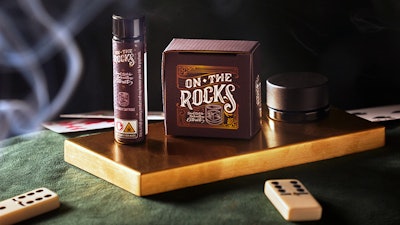
TL: Headset’s 2021 data for Oil Day shows rosin products had the strongest growth in U.S. markets (increasing in sales by 213%). Any indication why that product performs so well compared to other concentrates?
ML: It’s hard to tell if this is a consumer preference versus just more companies trying new things. Rosin and other solventless segments are very popular right now. Partially, I think what’s attractive is the solventless aspect retains a lot of taste. I’ve done some analysis that basically shows that people are willing to sacrifice some THC potency in favor of higher terpene products. So, we’ve seen products like rosin gain a lot of traction.
And then also rosin is just a smaller category to begin with. So, if you think about a 213% increase off of a couple million dollars versus distillate, which is the most common cartridge type for vape pen, which does hundreds of millions or tens of millions of dollars, it’s much easier to get that huge jump year to year.
One thing I’ve found from just the clientele of people who use concentrates regularly and people who would be interested in Dab Day is that these are experienced users. They care a lot about the taste profile, the type of high that they’re getting, less so than someone who’s maybe a new user and grabbing the preroll and just smoking at the park. That’s, I think, a huge part of concentrates, too, is when taste is the most enhancing of any product category.
TL Are there any other category/product trends during Oil Day that may stand out?
ML: You may also see retailers trying to introduce newer products and segments, say beverages, which also there’s a very big high-dose segment of beverages. So, that’s what I’m talking about is like, “Oh, you came in for concentrates, but we also have a discount or a sale on beverages.” This is an opportunity to introduce a specific clientele to an adjacent product category. So, I bet people will definitely do that.
TL: With prerolls being the fastest growing product category for overall sales (from November 2021 to November 2022), what are your thoughts on how infused prerolls will perform for this upcoming Oil Day?
ML: Prerolls have been going crazy the last couple years, especially in the last year, and it really appeals to this specific clientele, because one thing that makes cannabis unique from say alcohol is there’s a huge tolerance factor. And so, that’s why I think people really love the infused prerolls, because prerolls are a super popular category for the same reasons that we talked about with vape pen: super convenient, approachable, but then also the value that comes with the THC per dollar that you’re getting from an infused preroll versus just rolling your own joint or buying a preroll. It’s a higher THC per dollar, which is what a lot of people care about when we’re looking at this specific customer segment.
The other thing is I think prerolls in Canada in the infused section might even surpass traditional concentrates, because prerolls are the darling of Canada right now. I think they have a little less fascination with all these fancy new tools, and they’re a little more enamored with just the traditional vape pens, for example, and the edibles have a much smaller category share of overall sales in Canada than they do in the U.S. So, I would expect to see prerolls do really well.










